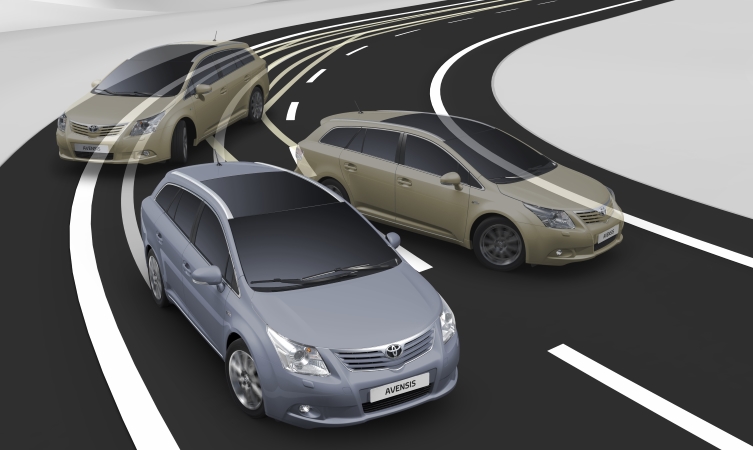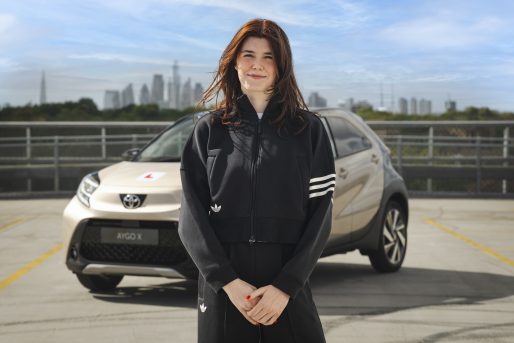Toyota develops its vehicles and technology under the umbrella of an ‘Integrated Safety Management Concept’, one part of a three-pronged approach which involves continual improvement in vehicle safety as well as initiatives to improve driver and pedestrian awareness and to create a safe traffic environment.
Toyota’s eventual aim is to realise a society where traffic accidents are a thing of the past, which is why decades of research into safety technologies have resulted in Toyota cars receiving consistently high results in Euro NCAP crash safety tests, with the Prius, Yaris, Auris, Verso, Avensis and RAV4 achieving the maximum five-star award.
In this post, we take a look at how Toyota’s safety technologies maintain stability in all manner of driving conditions:
Vehicle Stability Control (VSC/VSC+)
Traction Control (TRC)
Hill-start Assist Control (HAC)
Downhill Assist Control (DAC)
Vehicle Stability Control (VSC/VSC+)
Vehicle Stability Control (VSC) is a technology that Toyota has used on its vehicles since 1995, aimed at maintaining stability and preventing skidding in slippery conditions or as the result of sudden steering as when avoiding a collision. When sensors detect that the vehicle is starting to skid sideways, VSC automatically activates individual brakes and regulates engine output to regain stability and control, significantly reducing the risk of an accident.
All Toyota passenger vehicles feature either VSC or the latest Vehicle Stability Control Plus (VSC+) system that adds steering control to automatically apply steering assistance and make it easier to get back on course.
Traction Control (TRC)
Toyota’s history with Traction Control (TRC) dates back to 1987, and the technology has continually been updated as cars have become more sophisticated. The Traction Control system is designed to prevent wheel spin when setting off or accelerating on wet or slippery roads.
Sensors monitor each wheel’s speed to detect wheel spin, at which point TRC will intervene to apply the brakes or reduce engine power in an attempt to regain grip and provide stable acceleration. It’s particularly beneficial in a rear-wheel drive car like the Toyota GT86 where a loss of traction could cause the car to spin.
Traction Control is fitted to all of Toyota’s current passenger vehicles with the exception of the Toyota Aygo.
Hill-start Assist Control (HAC)
Introduced in 2002, Hill-start Assist Control (HAC) assists in preventing low-speed collisions caused by rolling backwards while attempting to set off on an incline. When the driver has selected a forward gear, a firmer push on the brake pedal activates HAC, which in turn maintains brake pressure for up to two seconds after the brake pedal has been released. This prevents the vehicle from rolling backwards and ensures a smooth start.
Hill-start Assist Control is available on a most Toyota models including RAV4, Auris, new Prius, Prius+, Verso and Land Cruiser.
Downhill Assist Control (DAC)
Downhill Assist Control (DAC) has also been fitted to Toyota cars since 2002, and is designed to maintain stability in travelling downhill in off-road conditions. When activated, the DAC system applies individual brakes to keep the vehicle stable and maintain a constant speed of three to 4.5mph during descent. It works in forward or reverse gears and requires no pedal input from the driver, who can then concentrate fully on the task of navigating the terrain.
Downhill Assist Control is standard equipment on RAV4 and Land Cruiser models.
To learn more about other Toyota safety technologies, see these related posts:
Braking technologies
Monitoring systems
Occupant safety
Safety through convenience





Please could you help o have a toyota verso 63 reg when I put it in reverse the camera comes on but I don’t see any grid lines ?
Hi Adam, thanks for your question.
Please contact your Toyota Centre if you believe that there is a fault with your vehicle, so that they can physically inspect the problem.
Thanks.
I recently brought a 2011 auris automatic, how do I know if it has hill assist as it don’t hold on hills
Hi Lee,
Thanks for your comment.
You can locate all details and specifications of your vehicle, through your owners manual.
https://www.toyota.co.uk/customer/manuals?srsltid=AfmBOoqmN2iMpNft4B9iCNOLYWa-lmlHzQdTdFzwM06CADAOunHq8a-g
You can locate your owners manual following the link above.
Thanks,